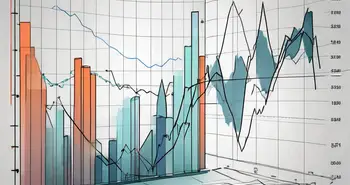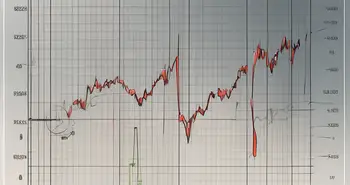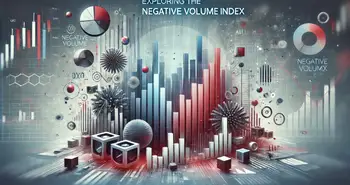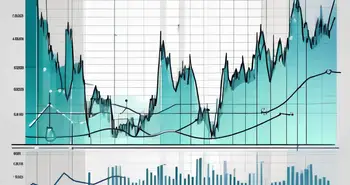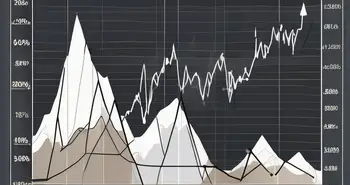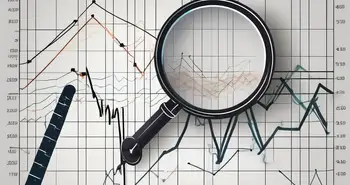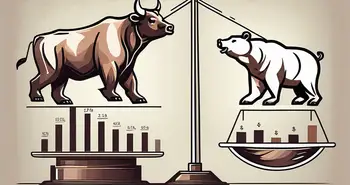Using the Relative Volume Model to Its Full Potential

As an expert in trading strategies, I am often asked about the most effective tools for predicting market trends and enhancing trading strategies. One model that I highly recommend is the Relative Volume Model. In this article, we will dive into the basics of the Relative Volume Model, explore its mechanics, discuss its benefits, address common misconceptions, and provide valuable tips for maximizing its power.
Understanding the Basics of the Relative Volume Model
The Relative Volume Model is a powerful tool that helps traders analyze the volume of a particular asset or security in relation to its historical volume. By comparing the current volume to the average volume over a given period, traders gain valuable insights into market sentiment and potential price movements.
But why is volume important in trading? Volume represents the number of shares or contracts traded during a specific time period. It provides valuable information about the level of interest and enthusiasm that investors have for a particular asset. High volume often indicates strong market activity and can indicate the presence of a breakout or trend reversal.
Understanding the concept of relative volume is crucial to fully grasp the power of the Relative Volume Model. Relative volume is calculated by dividing the current volume by the average volume over a specified period, typically 50 days.
For example, if a stock's current volume is twice the average volume over the past 50 days, the relative volume would be 2. This indicates that the stock is experiencing high trading activity compared to its recent history.
Relative volume provides traders with valuable information that can influence their trading decisions. By analyzing the relative volume, traders can assess the level of participation and interest in a particular market or security. This information can help identify potential breakouts, reversals, or trends and can be used to confirm other technical indicators.
For instance, a high relative volume accompanied by a bullish price pattern might suggest strong buying pressure, indicating a potential uptrend. Conversely, a high relative volume paired with a bearish price pattern could indicate strong selling pressure, signaling a potential downtrend.
Moreover, it is important to note that relative volume can also be used to identify periods of low trading activity. When the relative volume is significantly lower than the average volume, it may indicate a lack of interest or participation in the market. This could mean that traders should exercise caution as it may be a period of consolidation or indecision.
Additionally, the Relative Volume Model can be applied to different time frames, allowing traders to analyze volume patterns over shorter or longer periods. By examining volume trends over multiple time frames, traders can gain a more comprehensive understanding of market dynamics and make more informed trading decisions.
Delving into the Mechanics of the Relative Volume Model
Now that we've covered the basics, let's delve deeper into the mechanics of the Relative Volume Model.
The Relative Volume Model is a powerful tool used by traders to gauge the level of trading activity in a particular asset. By understanding and utilizing this model effectively, traders can gain valuable insights into market sentiment and potential price movements.
Calculating Relative Volume
To calculate the relative volume, traders divide the current volume by the average volume over a specified period. This can be done manually or using various technical analysis tools and platforms. Many traders rely on popular charting software that offers built-in features for calculating and displaying relative volume.
Remember, relative volume is a dynamic measure that changes constantly, reflecting the current trading activity. It's important to recalculate it regularly to ensure accurate analysis.
Moreover, some traders prefer to customize the period over which they calculate the average volume to suit their trading strategies. By adjusting this parameter, traders can fine-tune their analysis and adapt to different market conditions.
Interpreting Relative Volume Indicators
Once you have the relative volume calculated, it's essential to interpret the indicators correctly. Here are some key aspects to consider:
- A relative volume of 1 indicates average trading activity.
- A relative volume greater than 1 suggests high trading activity, indicating increased interest in the asset.
- A relative volume less than 1 indicates lower than average trading activity, suggesting decreased interest.
By analyzing the relative volume in combination with other technical indicators and chart patterns, traders can make more informed trading decisions and increase their chances of success.
Furthermore, some traders use relative volume as a leading indicator, anticipating potential price movements based on shifts in trading activity before other technical indicators confirm the trend. This proactive approach can provide traders with a competitive edge in fast-paced markets.
Benefits of Using the Relative Volume Model
Now that we understand how the Relative Volume Model works, let's explore its benefits.
Enhancing Trading Strategies
The Relative Volume Model empowers traders with valuable information that can significantly enhance their trading strategies. By incorporating relative volume analysis into their decision-making process, traders can identify high-potential trading opportunities and align their trades with market sentiment. This can improve the accuracy and profitability of their overall trading strategy.
Furthermore, the Relative Volume Model provides traders with a deeper understanding of market dynamics. By analyzing volume trends alongside price movements, traders can gain insights into market psychology and investor behavior. This comprehensive view of the market can help traders make more informed decisions and adapt their strategies to changing market conditions.
Predicting Market Trends
Another key benefit of the Relative Volume Model is its ability to help predict market trends. By analyzing the volume in relation to price movement, traders can identify potential trend reversals or confirm existing trends. This knowledge allows traders to enter trades at optimal entry points and stay ahead of the market.
Moreover, the Relative Volume Model can assist traders in identifying market anomalies and irregularities. By closely monitoring volume patterns, traders can spot unusual trading activity that may signal upcoming market movements. This early detection of market shifts can give traders a competitive edge and help them capitalize on emerging opportunities.
Common Misconceptions about the Relative Volume Model
While the Relative Volume Model is a powerful tool, there are some common misconceptions that traders should be aware of.
Misinterpretation of Data
One common mistake traders make is misinterpreting the relative volume data. It's essential to understand that relative volume should not be viewed as a standalone indicator. It should always be used in conjunction with other technical analysis tools and indicators to confirm the trading signals.
Overreliance on the Model
While the Relative Volume Model provides valuable insights, it's crucial not to rely solely on this model for decision-making. Markets are complex and dynamic, and it's important to consider multiple factors, such as fundamental analysis, market news, and other technical indicators, to make well-rounded trading decisions.
Tips for Maximizing the Power of the Relative Volume Model
Finally, let's explore some valuable tips for maximizing the power of the Relative Volume Model.
Best Practices for Using Relative Volume
When using relative volume analysis, it's important to:
- Consider longer-term trends by analyzing relative volume over extended periods.
- Combine relative volume analysis with other technical tools, such as moving averages or trendlines, for confirmation.
- Regularly review and update your relative volume calculations to ensure accurate analysis.
By following these best practices, traders can leverage the full potential of the Relative Volume Model and make more informed trading decisions.
Avoiding Common Pitfalls
To avoid common pitfalls when using the Relative Volume Model, remember:
- Do not solely rely on relative volume as the sole indicator for trading decisions.
- Consider the overall market conditions and other external factors.
- Continuously educate yourself and stay updated on market trends and changes.
By keeping these points in mind, traders can avoid potential pitfalls and make enhanced trading decisions with the Relative Volume Model.
Ready to take your trading to the next level with the insights from the Relative Volume Model? Experience the future of investing with Morpher, the revolutionary platform that offers zero fees, infinite liquidity, and the flexibility of fractional investing. Embrace the power of blockchain technology and gain access to a wide range of markets, from stocks and cryptocurrencies to unique assets like NFTs. Sign up now to enjoy the safety of a non-custodial wallet, the potential of 10x leverage, and a unique trading experience with Virtual Futures. Sign Up and Get Your Free Sign Up Bonus today, and unlock the full potential of your trading strategies with Morpher.

Disclaimer: All investments involve risk, and the past performance of a security, industry, sector, market, financial product, trading strategy, or individual’s trading does not guarantee future results or returns. Investors are fully responsible for any investment decisions they make. Such decisions should be based solely on an evaluation of their financial circumstances, investment objectives, risk tolerance, and liquidity needs. This post does not constitute investment advice.

Painless trading for everyone
Hundreds of markets all in one place - Apple, Bitcoin, Gold, Watches, NFTs, Sneakers and so much more.

Painless trading for everyone
Hundreds of markets all in one place - Apple, Bitcoin, Gold, Watches, NFTs, Sneakers and so much more.

